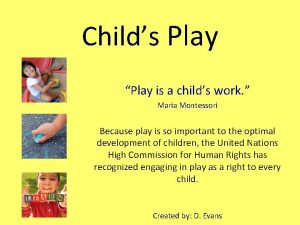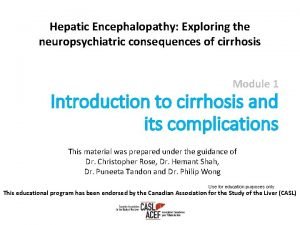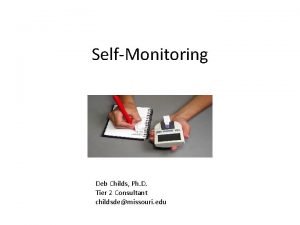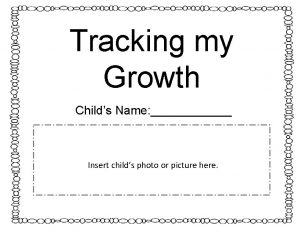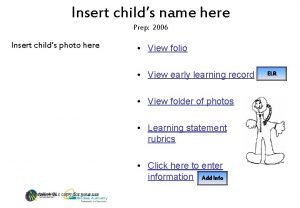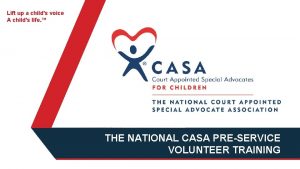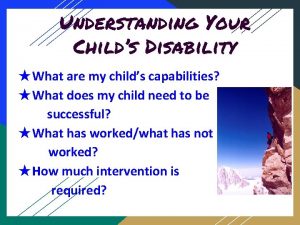INTRODUCTION TO GROWTH AND DEVELOPMENT Childs growth and
















- Slides: 16



INTRODUCTION TO GROWTH AND DEVELOPMENT Child's growth and development are complex processes which are influenced by multiple factors and sources. This unit encompasses them in detail. The terms growth and development are often used interchangeably or paired up in a rather similar way, which causes ambiguity over their meaning. It is, therefore, important to understand the difference between these two terms right at the outset.

• Growth • The term growth implies an addition or increase in the bodily aspects that can be measured, for example, height, weight, size, muscles and length (Woolfolk, 2014). It is based on biological processes that naturally occur over a period of time and are relatively not or less influenced by context except for extreme illness or undernourishment. It eventually stops when the body parts reach the peak of their growth.

• Growth • Overall, growth refers to the natural, spontaneous, specific, genetically programmed and measurable quantitative gains in a human body. Most of the child's physical gains fall within this category. Some of the developmental psychologists also refer to these changes as maturation.

Development While growth refers to the physical changes that an individual undergoes, development refers to certain changes that occur within the life-span of an individual, that is, from conception till death (Keenan & Evans, 2009). It not only involves growth, but also entails disintegration and eventually decay (death). However, not all changes are considered as development. Rather, it applies to those changes that appear in orderly ways and are considerably permanent. Most of these changes are qualitative in nature and influenced by context, for example, changes in behavioral, social, moral and intellectual aspects of an individual. Overall, these changes result in better, adaptive, organized and complex human behaviors.

Development For further details please refer to the following material: Woolfolk, A. E. (2014) Educational Psychology (12 th ed. ) Pearson India: Dorling Kindersley India Pvt. Ltd. pp. 42 -44 • Keenan, T. , & Evans, S. (2009) An Introduction to Child Development (2 nd ed. ). Los Angeles: SAGE pp. 3 -5

• Development has been described in different ways to highlight different aspects. These include: domains of development and stages of development. While the former emphasizes the processes that characterize development, the later focuses certain age • periods to manage the flow of time across child development. The following sections describe each of them in detail

1. Domains of development The pattern of child development is generally divided into three broad categories including physical, cognitive and socio-emotional development (Berk, 2013). The physical domain involves biological changes that occur over time. These include changes in body size, proportions, appearance, motor skills, physical health etc. The cognitive domain includes changes in intellectual abilities and skills such as thinking, intelligence, creativity, attention, memory, language etc. Whereas, the socio-emotional domain highlights the processes that relate to the changes in a child's relationships with others, feelings, emotions, values, beliefs, personality etc


Stages of development. It is believed that an interplay of various domains of development (as discussed in the above section) generate the different stages of child development. Some of the psychologists have used age periods to account for the new capacities, transitions and social expectations in children over the course of time (e. g. , Berk, 2013).

Berk, L. E. (2013) Child Development (9 th ed. ) Pearson Education Inc. : U. S. A. pp. 4 -6


involved in development. In this way, multiple perspectives and approaches are needed to better understand the nature of human development


 Childs work childs play
Childs work childs play Love and logic
Love and logic Perceptual reasoning
Perceptual reasoning The catcher in the rye chapter 15 summary
The catcher in the rye chapter 15 summary Childs pugh mdcalc
Childs pugh mdcalc Naughtia childs porn
Naughtia childs porn Child's play manual handling
Child's play manual handling Kenna childs wikipedia
Kenna childs wikipedia Dee childs
Dee childs A childs sleep poem
A childs sleep poem Abcd of nutritional assessment
Abcd of nutritional assessment Gretchen childs
Gretchen childs Gretchen childs
Gretchen childs Deb childs
Deb childs Janet childs center for living with dying
Janet childs center for living with dying What is plant growth analysis
What is plant growth analysis Root hair structure
Root hair structure
